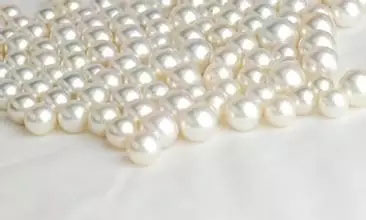Indonesia is the world's largest producer of South Sea pearls, accounting for 43% of global supply, and enjoys the reputation of “Queens Pearlâ€. Recently, the Chinese delegation came to Bali's neighboring Lombok Island to visit the local pearl farm to learn about the processing technology of Nanyang Pearl. According to workers at local pearl farms, it takes up to four to six years for a pearl to grow from the clam shell to the final harvest of the pearl. The entire incubation process consists of multiple procedures: artificial seedlings, cub culture, insertion of beads, and pearl harvesting. Less than 10% of the artificially cultivated cubs can further cultivate the pearls. The pups can be cultured in the sea after 2 months of growth. After 2 years, they can be implanted with pearl nuclei "surgery", which is added to the pearls. Small balls made from shells, ranging from 3 to 8 mm in diameter, can be taken after two years. Indonesian-made Nanyang pearls are different from the traditional "one-time killing", but can cultivate up to four pearls in a lifetime. A 1 cm diameter pearl, the farm price is about 650 yuan, and the price of the best Nanyang pearl is up to millions of yuan. Lombok, Indonesia is the island of West Nusa Tenggara, located on the east side of Bali. There are more than 200 kilometers of coastline, the sea is clear and pollution-free, and it is the best sea area for breeding pearls. However, due to the small number of domestic investors in Indonesia, the pearl farming industry is mostly monopolized by foreign investors in countries such as Australia and Japan. Take the example of a pearl farm visited by a network of celebrity delegations led by the World Wide Web. The farm belongs to an Australian company called “Autoreâ€, which has 5 farms in Indonesia, one of which has an annual production of more than 20 farms. Ten thousand, mainly sold to Australia, and the market share in China is low. According to the staff of the farm, the fine pearls are characterized by heavy weight, full color, high density and roundness. In addition to the common white and light pink pearls, there are many rare pearls in Indonesia, and the price is higher.
Yak
fiber is fine, and
the outer squama is thicker and softer than cashmere. Therefore the yak yarn products are with soft hand-feeling which can be compared with
cashmere. The medulla of the
yak fiber is bamboo-shaped but
cashmere is continuous. Hence the yak fiber is more easy to store of air, and
the warm keeping is better than cashmere.
Consinee supply Yak Yarn,Yak Wool Yarn,Yak Knitting Yarn and Yak Blend Yarn in stock service.
CC120095: 2/26 75%
mer. Wool (90`s) 25% yak
CC120105: 2/26 70%yak 30% cashmere
Yak Yarn,Yak Wool Yarn,Yak Knitting Yarn,Yak Blend Yarn Consinee Group Co., Ltd. , https://www.consineeyarn.com
